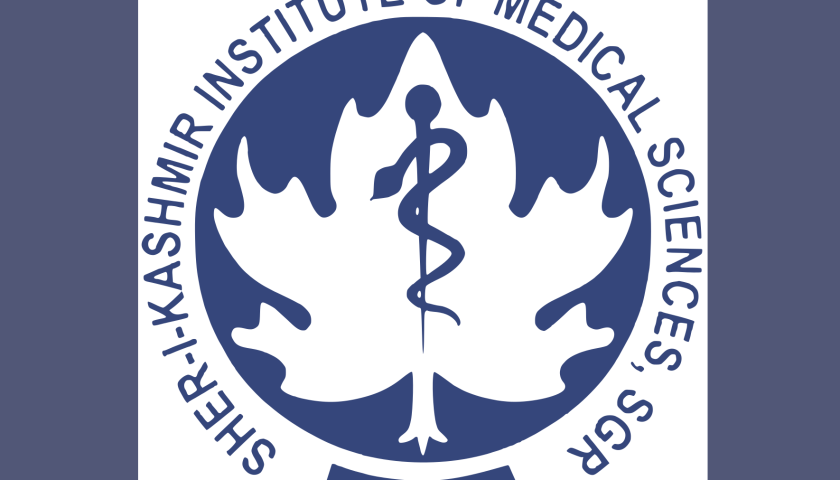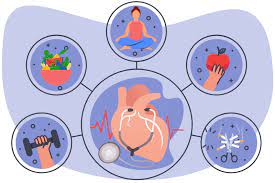Taming the Silent Killer: Building a Culture of Hypertension Management in Kashmir
By: Saika J
Kashmir, the “Crown of India,” renowned for its breathtaking landscapes and rich culture, faces a growing health concern – a rise in hypertension (high blood pressure) among children and teenagers. This silent killer, often undetected, can have devastating consequences if left untreated. Let’s delve deeper into this alarming trend and explore strategies to protect Kashmir’s young generation.
A Global Pandemic with Local Impact
Hypertension is a global health crisis, and India is no exception. According to the World Health Organization (WHO), one-third of deaths in India are attributed to non-communicable diseases, with cardiovascular diseases leading the pack. Here, hypertension reigns supreme, affecting an estimated 220 million people.
Kashmir’s Youth Under Siege
The situation in Kashmir is particularly concerning. Medical experts report a worrying surge in hypertension cases among young people, including school-going children. This trend deviates sharply from the traditional age of onset for this condition.
Dr. Muhammad Salim Khan, Head of the Department of Community Medicine at GMC Srinagar, emphasizes the gravity of the situation. He highlights the lack of awareness, with almost half of hypertensive adults unaware of their condition. This “silent killer” often shows no obvious symptoms, further complicating early detection.
The Culprits: Lifestyle Shifts and Dietary Choices
The culprit behind this rise in youth hypertension is a complex interplay of factors. Dr. Khan points to drastic changes in lifestyle and food habits. Here are some key contributors:
- Sedentary Lifestyle: Reduced physical activity and increased screen time are taking a toll on young people’s health. Physical inactivity leads to weight gain, a significant risk factor for hypertension.
- Dietary Excesses: The Kashmiri diet, traditionally known for its fresh produce, has undergone a shift. Increased consumption of salt, sugar, and unhealthy fats in processed and fast foods contributes to hypertension development.
- Salt Overload: The average Kashmiri consumes a staggering 10-15 grams of salt daily, exceeding the recommended daily intake of 5 grams. This excessive sodium intake puts a strain on the cardiovascular system.
Beyond Adults: Protecting Young Hearts
The impact of undiagnosed and uncontrolled hypertension extends far beyond immediate symptoms. Left unchecked, it can lead to severe complications like heart attack, stroke, and kidney failure in later life. This emphasizes the urgent need for early detection and intervention, particularly among Kashmir’s younger population.
Building a Culture of Prevention: A Multi-Pronged Approach
Combating this rise in youth hypertension requires a multi-pronged approach. Here are some crucial steps:
- Education is Key: Integrating hypertension awareness programs into school curriculums can equip younger generations with the knowledge to make informed lifestyle choices. These programs should educate students about the dangers of hypertension, risk factors, and healthy habits for prevention.
- Promoting Healthy Habits: Encouraging regular physical activity through physical education programs and community initiatives can significantly improve young people’s health. Additionally, promoting healthy eating habits that emphasize fresh fruits, vegetables, and whole grains can help reduce salt, sugar, and fat intake.
- Parental Involvement: Parents play a vital role in shaping their children’s health choices. Educational campaigns targeting parents can increase awareness about childhood hypertension and empower them to create healthy home environments.
- Community Support: Community engagement is crucial for creating a culture of healthy living. Organizing workshops and seminars can educate the public about hypertension risks and encourage healthy lifestyle practices.
Healthcare Professionals: The Frontline of Defense
Healthcare professionals have a pivotal role in tackling this issue. Regular health screenings for children and teenagers, coupled with early diagnosis and management strategies, are essential. Additionally, healthcare providers need to educate their patients about the importance of adhering to prescribed medications and maintaining healthy lifestyle habits.
The Road Ahead: A Healthy Future for Kashmir’s Youth
Hypertension among young people in Kashmir is a looming health crisis. By implementing a comprehensive approach that prioritizes education, healthy habits, and early intervention, we can turn the tide. Protecting the hearts and well-being of Kashmir’s future generation is a collective responsibility. Let’s work together to ensure a healthy future for Kashmir’s youth and safeguard the paradise’s vibrant spirit.
Beyond Awareness: Empowering Kashmiris to Manage Hypertension
Raising awareness about hypertension is a critical first step, but the fight doesn’t end there. Empowering Kashmiris with the knowledge and tools to manage hypertension effectively is crucial for long-term health.
Navigating the Medical System:
Many individuals with hypertension face challenges in accessing and navigating the healthcare system. Here are some ways to address these hurdles:
- Accessibility: Increasing healthcare facilities in remote areas of Kashmir can improve access to essential medical services like blood pressure screenings and consultations.
- Telehealth Initiatives: Telehealth services, which allow virtual consultations with healthcare providers, can be a valuable tool for rural communities. This can improve access to specialists and ongoing care, especially in areas with limited medical infrastructure.
- Financial Assistance: Financial constraints can prevent people from seeking treatment. Exploring government or NGO support programs that offer free or subsidized hypertension medication and consultations can increase treatment accessibility.
Building Self-Management Skills:
Empowering individuals to actively manage their hypertension can significantly improve their health outcomes. Here’s how:
- Self-Monitoring: Encouraging patients to regularly monitor their blood pressure at home using reliable BP monitors allows for early detection of fluctuations and timely adjustments to treatment plans.
- Medication Adherence: Medication adherence is critical for controlling hypertension. Educational programs and support groups can help patients understand the importance of taking medication as prescribed and address any concerns about side effects.
- Lifestyle Modifications: Supporting healthy lifestyle changes forms the cornerstone of hypertension management. Promoting regular physical activity programs, healthy eating workshops, and stress management techniques empowers patients to actively contribute to their well-being.
- Mental Health Support: The emotional burden of chronic diseases like hypertension can be significant. Providing access to mental health services can help patients cope with the diagnosis and adhere to treatment plans.
The Role of Technology:
Technology can be a powerful tool in empowering individuals to manage their hypertension:
- Mobile Health Apps: Educational mobile apps can provide patients with reliable information about hypertension, medication reminders, and tools to track blood pressure readings.
- Online Support Groups: Online support groups can connect patients with others facing similar challenges, fostering a sense of community and offering valuable peer-to-peer advice.
Traditional Medicine and Complementary Therapies:
Kashmiri traditional medicine has a rich history of using herbal remedies for various ailments. Integrating complementary therapies alongside conventional medicine, under the guidance of qualified healthcare practitioners, could be explored as a potential support system for managing hypertension.
Building a Culture of Wellness:
The fight against hypertension goes beyond individual actions. Fostering a culture of healthy living within communities is essential for long-term success. Here are some ways to achieve this:
- Workplace Wellness Programs: Encouraging workplaces to implement wellness programs that promote physical activity, healthy eating practices, and stress reduction can benefit employees’ physical and mental well-being.
- Community Events: Organizing walks, marathons, and sports events can encourage physical activity in a fun and engaging way. Additionally, food festivals showcasing healthy Kashmiri cuisine can promote sustainable and healthy eating habits.
- Media Advocacy: Raising awareness through targeted media campaigns on television, radio, and social media can reach a wider audience and encourage healthy lifestyle choices across Kashmir.
A Call to Action: Protecting Kashmir’s Heart
Hypertension among young people in Kashmir poses a serious public health challenge. By prioritizing education, empowering individuals with self-management skills, integrating technology and traditional medicine, and fostering a culture of wellness, we can collectively protect the heart of Kashmir – its future generations. Let’s join hands to ensure Kashmir’s youth lead healthy, vibrant lives and safeguard the paradise’s legacy for years to come.






